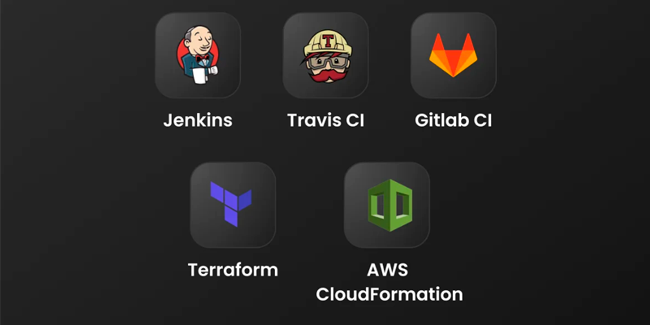

Best practices for continuous integration and deployment


Streamlining Software Development
Have you ever wondered what’s beneath successful CI/CD optimization? Central to this transformative approach is DevOps. It is a kind of philosophy that encourages collaboration, communication, and integration between developers and IT operations. In turn, Continuous integration (CI) and continuous deployment (CD) serve as their cornerstones. CI/CD delivers high-quality software at its best quality and convenience. At Introduct, an experienced IT services provider, we embrace DevOps principles to streamline software development processes and deliver exceptional solutions to our clients. That’s why it’s an honor for us to share some useful techniques and practices for continuous integration and deployment.
Now let’s explore the principles of DevOps, the continuous integration and deployment processes that form modern software development.
Building a Seamless CI/CD Pipeline
The first thing to do is to set up a robust CI/CD pipeline. It will help to streamline software development processes and ensure rapid and reliable deployment of code changes. The pipeline is like the backbone of the development workflow. It helps to automate key tasks and provides a structured approach to building, testing, and deploying software. Here are steps to follow to set up a CI/CD pipeline:
- Optimal Tool Choice: Choose the one that is easy to use, scalable, and suitable for your needs. Some of them include Jenkins, TravisCI, CircleCI, and GitLab CI/CD.
- Setting Up the Deployment Process: Careful configuration is crucial for speed and reliability. It usually includes testing in a staging environment before the production release.
- Automate Builds and Tests: Essential for the CI/CD optimization process, which identifies and resolves issues early in development.
Best practices for successful CI/CD optimization
So, let’s look at successful CI/CD optimization techniques. Here are some key best practices for successful CI/CD implementation:
- Effective Version Control Practices: Effective version control management involves managing code changes and using branching strategies to keep code changes isolated from each other. This ensures seamless reversion to prior versions when needed.
- Streamlined Deployment Automation: This process of moving code changes from development to production includes continuous delivery and continuous deployment.
- Tracking and Assessment: This is a way of ensuring that the pipeline is working correctly and that code changes are deployed without problems. Build times, test coverage and deployment success rates are key metrics to track.
CI/CD Optimization Challenges and Solutions
There might be some challenges with CI/CD and usually, they happen because of such factors as wrong code, poor tool configuration, and also lack of communication between a team. All these challenges can be solved by regular team meetings, tool configuration control, and investing in developers’ training and courses. These steps will help to optimize CI/CD process, reduce mistakes, and build new and relevant knowledge among the team members.
In summary, CI/CD plays a fundamental role in DevOps, enabling the rapid and effective delivery of software. By building strong CI/CD pipelines, automating workflows, and following techniques and practices, IT companies can overcome obstacles and achieve their goals. The promotion of continuous learning and improvement is key to being competitive in DevOps and CI/CD.
More Articles

Artificial Intelligence in Software Engineering — A Real Threat for Developers? Artificial Intelligence in Software Engineering — A Real Threat for Developers?
In the age of Artificial Intelligence in Software Engineering, more and more developers face the problem of being able to stay relevant in their field. Developers' concerns about the future of their profession are justified and might seem like a situation where people fear new technology will overtake jobs.

Elixir vs Golang: Choosing the Right Language for Gaming Platforms Elixir vs Golang: Choosing the Right Language for Gaming Platforms
GoLang or Elixir? When it comes to developing gaming platforms, the choice of programming language can significantly impact performance, scalability, and development speed. In this blog post, we’ll compare two popular languages, Elixir and Golang, and explore their suitability for building gaming platforms.
